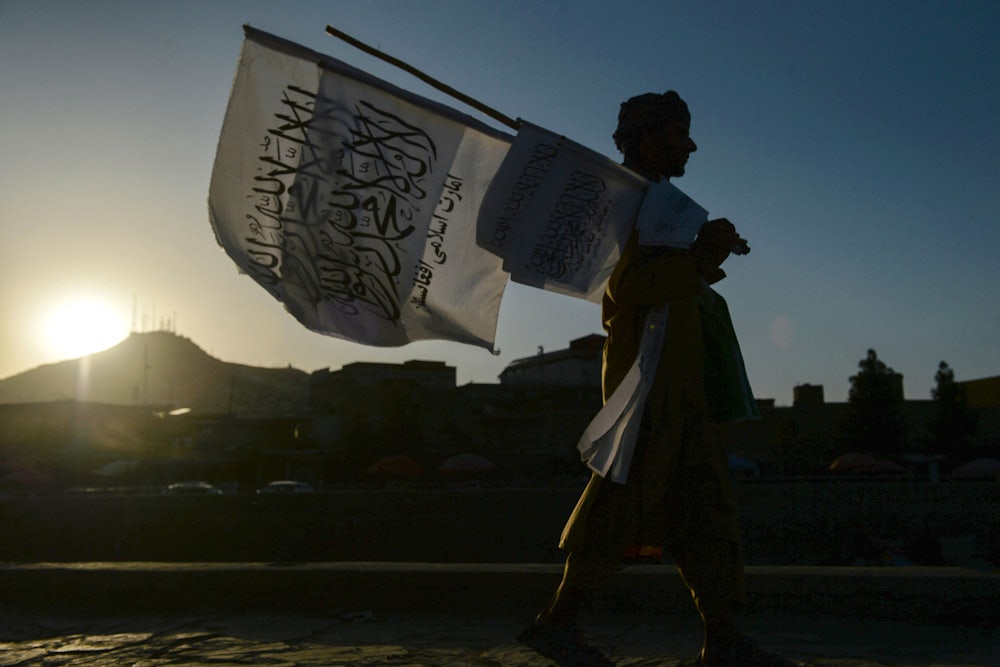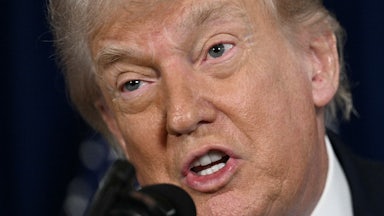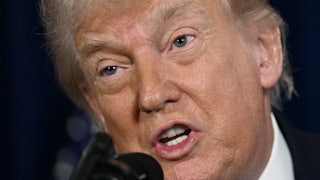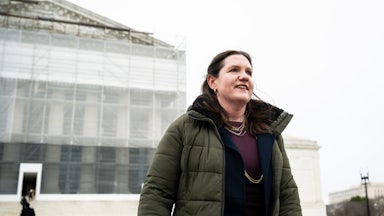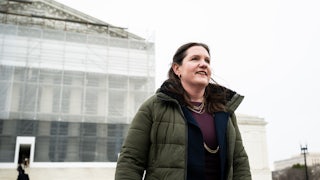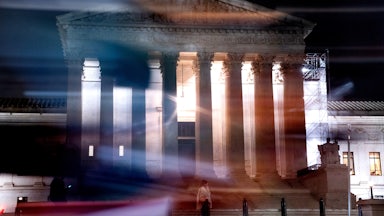In the wake of the U.S. withdrawal from Afghanistan and the fall of Kabul to the Taliban, new fears have been raised that a Taliban-ruled Afghanistan represents a potentially deadly terrorism threat to the United States. “Al Qaeda operated from Afghanistan before September 11, and they can do so again, with deadly consequences,” or so the argument goes.
It is, however, to put it mildly, a strange view of how history works. Assuming that the situation today in Afghanistan—and with Al Qaeda—is unchanged from where it was 20 years ago fundamentally ignores how much the world and the U.S. approach to terrorism has evolved since September 11.
In reality, the overall terrorist threat to the U.S. remains quite low. Over the past 20 years, jihadist terrorists have killed approximately 100 Americans on U.S. soil. The U.S. homeland is far better protected than it was 20 years ago. This is true with or without an Al Qaeda safe haven in Afghanistan. And besides, the likelihood that the Taliban, who spent two decades fighting to get back into power, would allow history to unfold the same way it did in 2001 seems far-fetched, at best. Last, with the Taliban needing to have a better relationship with the U.S. for political, economic, and security reasons, a close relationship with Al Qaeda is simply not in their self-interest in the way it was in the 1990s.
The single most obvious and far-reaching change since 9/11 is that the U.S. is now far more prepared for a major terrorist attack—and able to stop one. Before September 11, the FBI and CIA did not share intelligence information. That meant that the CIA failed to inform domestic law enforcement about the presence of two Al Qaeda terrorists in the country, both of whom participated in the 9/11 attack. Today, both agencies are required, by law, to cooperate and share information.
After 9/11, Congress appropriated $97 million for airlines to replace flimsy cockpit doors with hardened, bulletproof ones. That alone made it virtually impossible to duplicate a 9/11-style attack. Congress made it more difficult to counterfeit driver’s licenses. And the federal government created no-fly lists and tightened immigration restrictions to prevent potential terrorists from entering the country.
But more than anything else, the mindset of America’s political leaders shifted. It’s easy to forget now, but before 9/11, Bill Clinton was criticized for his failed effort to kill Osama bin Laden with a missile strike in Afghanistan (in part because it came so soon after the revelations of his illicit affair with Monica Lewinsky). Today, such aerial attacks are routine and rarely lead to public criticism—even, as was the case last month in Kabul, when they kill the wrong target.
In the run-up to 9/11, President George W. Bush and those around him repeatedly downplayed requests from his CIA director, George Tenet, and the National Security Council’s director of counterterrorism, Richard Clarke, to respond aggressively to intel warnings about a potential terrorist attack. Tenet famously had his “hair on fire” about Al Qaeda. So, too, did Clarke, who was convinced in the summer of 2001 that a major attack was imminent. Bush famously told his intelligence briefer, who had flown to the president’s ranch to warn about a potential attack, that “you’ve covered your ass now.” It’s unimaginable that a presidential administration would be so blasé today if faced with such mounting evidence of a likely terrorist incident. Indeed, had the Bush administration mobilized even a half-hearted government response in the summer of 2001, it’s highly unlikely that 9/11 would have occurred.
The second part of the terrorism equation is the Taliban. Will they be willing to give safe haven to Al Qaeda if the terrorist group remains intent on attacking targets in the U.S.?
Twenty years ago, when they did so, it led to the Taliban being swept from power. Would the Taliban risk the same fate by supporting Al Qaeda today? Common sense says no.
According to Ibraheem Bahiss of the International Crisis Group, the Taliban cannot for ideological reasons and as a “hedging bet” fully delink themselves from Al Qaeda or even take military action against the organization. But as Bahiss points out, that doesn’t mean the U.S. should be overly concerned. “[Al Qaeda’s] presence in Afghanistan is likely to be contingent on not planning any attacks against foreign states. This is in line with the Taliban’s long-stated policy and the Doha agreement, which they say they will adhere to.”
It bears noting that one of the key provisions of the Doha agreement was for the Taliban to end all attacks against U.S. forces—an agreement they abided by, even as they ignored other aspects of the pact relating to the Afghan government.
Bahiss expects that the Taliban will seek to “limit AQ’s operational independence,” which could include embedding Al Qaeda fighters into the Taliban military and dispersing the group’s members to prevent “operational independence.”
One of the ironies of the Taliban again ruling Afghanistan is that it may make it easier for the U.S. to limit Al Qaeda’s operational capabilities. The most obvious reason is that any attack on the U.S. by Al Qaeda forces from Afghanistan will be blamed on Kabul. Beyond that, the U.S. is dangling major carrots before the Taliban. Administration officials have spoken of potential U.S. recognition of the new regime, a position that surely will be dependent on how the Taliban deal with Al Qaeda. In addition, the U.S. has previously provided support to the Taliban in combating the rise of the Islamic State in Afghanistan, which is a direct rival to the new regime. The prospect of such continued assistance—hinted at recently by General Mark Milley, chairman of the Joint Chiefs of Staff—would make it less likely that the Taliban would allow Al Qaeda to operate with impunity. Indeed, it hardly seems coincidental that the first high-level administration official to meet with the new Taliban rulers was CIA Director Bill Burns, who ventured to Kabul late last month.
The Taliban also need significant economic assistance from the West. Upsetting the U.S. by allowing Al Qaeda to stand itself up again is not the way to further those goals. The cynic will argue that the Taliban are more wedded to their ideology and hatred of the West than they are to pragmatic goals like not getting attacked by the U.S. again. But practically everything that has happened since the signing of the Doha agreement in February 2020 suggests otherwise. The Taliban didn’t help the U.S. take more than 120,000 people out of Kabul in two weeks and provide security for the effort out of the goodness of their hearts. They did it because it was in their interests to do so. U.S. policy can help ensure the Taliban continue to see benefits from working cooperatively with America.
The final issue is the much larger—and rarely addressed—question of whether safe havens even matter. It’s often forgotten that when Al Qaeda and Osama bin Laden crossed the border into Pakistan after the U.S. invasion, in the fall of 2001, the terrorist group had a safe haven in northwest Pakistan for several years. While eventually the U.S. would use a military campaign of drone strikes to wreak havoc on the group, those attacks did not begin until June 2004. So for two and a half years, Al Qaeda had a safe haven in Pakistan and was still unable to launch a major strike on a domestic American target.
As John Mueller, the noted Ohio State political scientist, points out in his recently published book, The Stupidity of War, “Although the 9/11 plotters received both guidance and funding from al-Qaeda in Afghanistan, much of the actual plotting was carried out in an apartment in Hamburg, Germany.… The notion that terrorists need a lot of space and privacy to hatch plots of substantial magnitude in the West has been repeatedly undermined by tragic terrorist episodes in Madrid in 2004, London in 2005, Paris in 2015, and Brussels and Istanbul in 2016.” Considering that not one of the attackers in these terrorist incidents came from an Al Qaeda safe haven would lead one to conclude that there is little intrinsic benefit for Al Qaeda to have a safe harbor in Afghanistan. Indeed, fighting a war there simply to prevent a terrorist group that can operate anywhere in the world from setting up camp makes no sense—and never has.
Finally, there is what Bahiss calls “the million-dollar question”—does the current iteration of Al Qaeda have the same ambitions or capabilities as bin Laden and his lieutenants? In Mueller’s view, Al Qaeda largely “ceased to exist” after 9/11. The two deadliest jihadist attacks in the U.S. since 9/11—the San Bernardino mass shooting in 2015 and the Pulse nightclub shooting in 2016 (the second-worst mass shooting in U.S. history)—were homegrown domestic incidents inspired not by Al Qaeda but, rather, the Islamic State. The latter group came into existence, of course, because of the U.S. war in Iraq.
The Pulse shooter cited the U.S. bombing campaign against ISIS in Iraq as a motive for the shooting and even posted on Facebook during the attack, “You kill innocent women and children by doing us airstrikes.… Now taste the Islamic state vengeance.” One might argue that lax U.S. gun laws—and America’s misbegotten efforts to fight terrorism abroad—rather than a safe haven nearly 8,000 miles away, were the major contributor to both of these tragic incidents.
This gets to the crux of the issue for American policymakers. In 2020, 19,000 Americans died from gun violence and another 24,000 lost their lives in gun-related suicides. More than 93,000 Americans died of a drug overdose, and more Americans will likely die in the next few hours from Covid-19 than have been killed by jihadist terrorists in the 20 years since 9/11. One might argue that these issues deserve far greater attention from policymakers than the unlikely possibility of a major terrorist attack emanating from Afghanistan.
